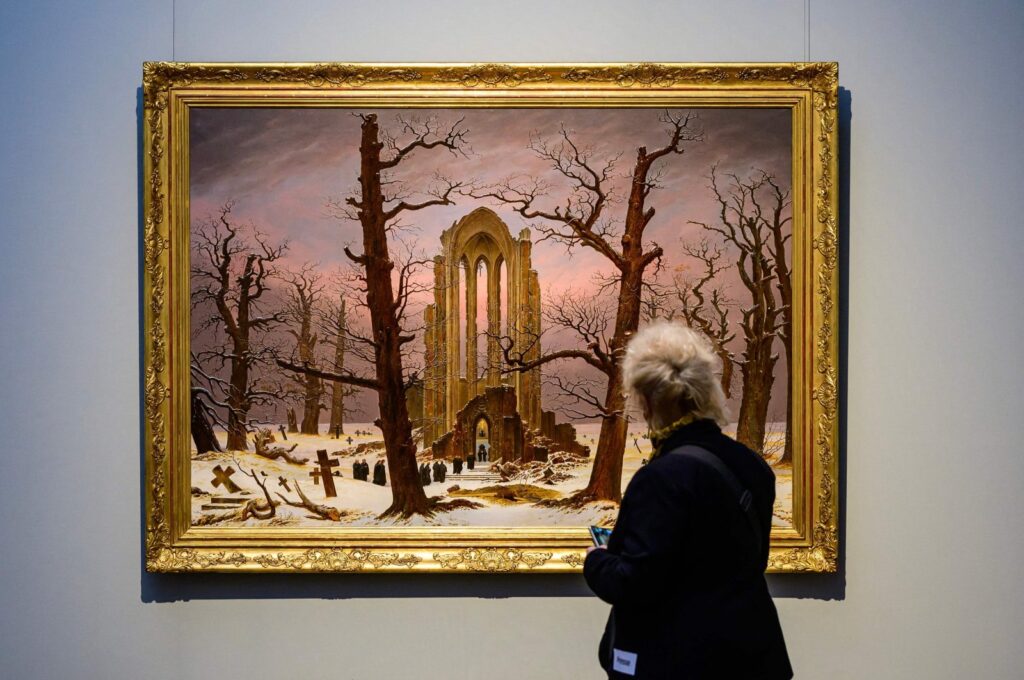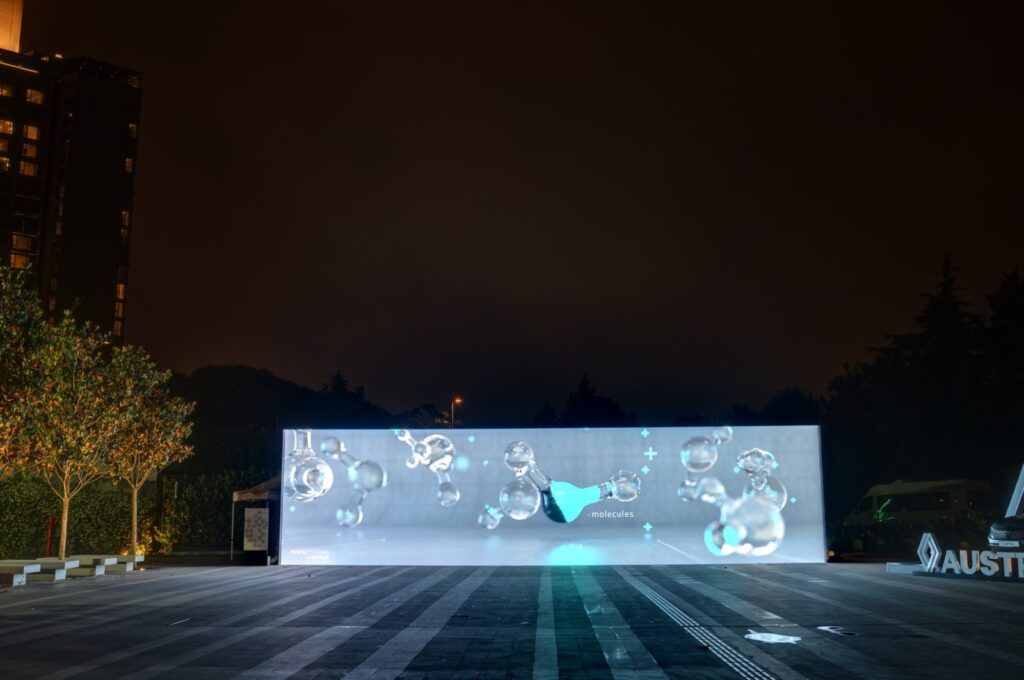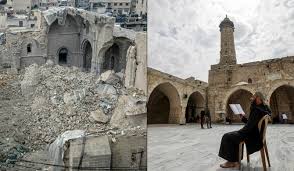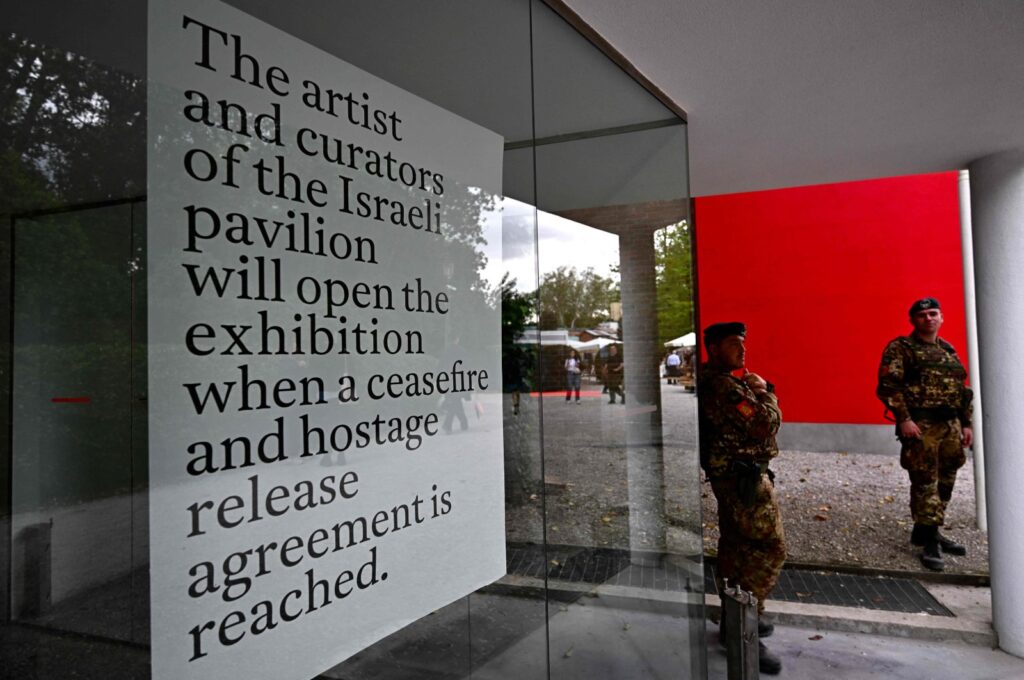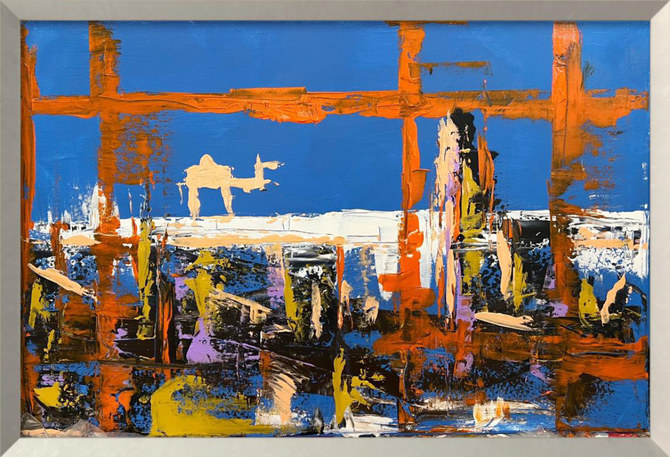
Melissa Gronlund
“We wanted it to extend past the doors of the pavilion,” says Muhannad Shono of The Teaching Tree, the moody, monstrous installation he has created for the National Pavilion of Saudi Arabia at the Venice Biennale. “It’s trying to escape its walls.”
Comprising 260 square meters of woven dried palm leaves — all dyed black — The Teaching Tree begins with the thin line of a point, like the beak of a bird, and widens as it stretches towards the pavilion entrance.
The undulating object is internally animated by a pneumatic machine, so that it gives the impression of breathing. The scent of dried palm leaves fills the air and the slow sound of the lungs evoke a beast at rest — slain, perhaps, or just waiting.
The work also begins conceptually from the idea of the line, or the black graphic mark, which Shono interprets both as a symbol of artistic creativity and a personal reference to his past. He started his art career at the back of the classroom, drawing black-ink comics in his notebooks. The line is now fundamental to his practice, appearing across his installations. Here, he says, it creates a narrative: from being a symbol of restriction, as in his youth when his creativity was discouraged, to today, where art is becoming an agent of change.
“The work is an embodiment of the living imagination,” he says. “It’s an act of creative resistance. Who’s in control of our narratives or stories? Is the black line being used to redact and restrict the word and the image? Or are we using it to feed the imagination?”
It’s an impactful work in a biennial that requires artworks to have a bit of spectacle to stand out. The pavilion is curated by Reem Fadda, director of Abu Dhabi’s Cultural Foundation, with assistance from Rotana Shaker.
For Shono, one of the most active members of the growing Saudi art scene, it also responds to the changes that the country is undergoing. Though Shono is not nostalgic about the past, he believes there is a connection between the social restrictions experienced by his generation and the immense creativity among that age group in the country today.
“Restrictions and limitations — they actually create more fertile grounds and stronger forms of expression,” says the Riyadh artist. “If you live in a society that’s equitable and fair, that’s nice. But what happens to art and expression? It diminishes because there’s nothing to push against.
“This work, and me being here, is a statement. It’s a timeline, a journey, not only my story, but a collective, irrepressible kind of expression that’s happening now in Saudi being reborn.”
:quality(70)/cloudfront-eu-central-1.images.arcpublishing.com/thenational/R66XAKRW6JCHVFLADCUCG7KREI.jpg?w=810&ssl=1)
In Shono’s case, this is not only to do with the kingdom’s support of the arts but also of Shono himself — his parents were immigrants to the country, and now he finds himself representing it on the world stage.
Saudi Arabia in the Biennale
The Teaching Tree’s orientation towards the future positions the pavilion at odds with the bulk of the biennial, particularly Cecilia Alemani’s curated exhibition The Milk of Dreams. Installed elsewhere in the Arsenale and in the Giardini’s International Pavilion, this exhibition is by turns recuperative and market-oriented, with a number of talented, older artists from so-called marginal places whose work has previously been ignored.
Other rooms seem more influenced by market trends in New York, where the Italian curator is based. In the national pavilions, too, such as the strong presentations of Estonia and France, the past is something to be mined and reframed. Archival works and deconstructions dominate alongside Alemani’s reclamation of artists, mostly female or from non-Nato countries.
The increased representation is to be celebrated, and the number of women and black artists at the biennial have been the subject of numerous headlines. But Shono’s trajectory suggests an alternative path: he is still working largely outside of the market, with most of his commissions granted by the growing, Saudi Arabia’s state-backed infrastructure.
:quality(70)/cloudfront-eu-central-1.images.arcpublishing.com/thenational/I75HXSFATNGU5BU7KQG6RR7R5M.jpg?w=810&ssl=1)
The activity in Saudi Arabia, and the financial resources being given to the arts there, keeps the focus on what’s coming rather than a sifting of what’s come before. Shono was given access to a warehouse in the expansive new JAX cultural district, in the Diriyah area, to make his mammoth work.
The presentation of the National Pavilion of Saudi Arabia, for the third time in the art biennial, also forms part of this push to bring the country on to the world stage, and Shono is upfront about the way that Saudi Arabia is internationally received. Here, The Teaching Tree operates as a “misunderstood monster,” he says, that reflects how “we are often in Saudi lumped up as stereotype or an editorial headline”.
:quality(70)/cloudfront-eu-central-1.images.arcpublishing.com/thenational/T6S4LVL7ORFNFOOJ4P437W7DUY.jpg?w=810&ssl=1)
“But once you enter into the [proverbial] forest, and start to really appreciate the leaves and the trees, you realise that there’s more connected lines between us and others,” he says. “That’s where understanding can happen. Because each line here is individual.”
The symbolic installationunderlines how this Saudi orientation towards the future affects the language of the work itself, privileging abstractions over archives and paintings that might represent the affairs of the past.
As Shono continues his practice, balancing its origins in his comic narratives against single installations, his artworks seem to both contract into one, single idea (one material, repeated, scaled up) as well as expanding into multiple sensorial vectors, incorporating smells and machinery, or elsewhere, smoke and fire, as if they want to break free.
The Teaching Tree is no exception. Viscerally charged, it is an enigmatic beast, drawing its power not so much from the stories it tells, but from its effect on the viewer in the present.
Courtesy: thenationalnews
The post Saudi Arabia’s Muhannad Shono introduces his ‘monster’ at the Venice Biennale appeared first on The Frontier Post.




